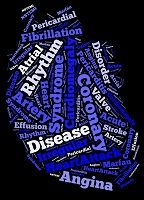Article
Shocks Reduced in Improved Implantable Defibrillator
Author(s):
Implantable cardioverter-defibrillators (ICDs) have prevented cardiac arrests and deaths, but they carry a risk of giving patients shocks when they don't need them. That inappropriate shock rate has been estimated as occurring in 10 to 20% of patients with the devices, causing unnecessary hospital admissions, and a negative impact on patients' quality of life. They are also associated with increased morbidity and mortality for some patients. But in a study in Heart Rhythm Angelo Auricchio, MD, PhD, and colleagues report on technological improvements in a Medtronic device that has reduced those shocks to 1.5% with a dual/triple chamber defibrillator and 2.5% for a single chamber ICD after one year.

Implantable cardioverter-defibrillators (ICDs) have prevented cardiac arrests and deaths, but they carry a risk of giving patients shocks when they don’t need them. That inappropriate shock rate has been estimated as occurring in 10 to 20% of patients with the devices, causing unnecessary hospital admissions, and a negative impact on patients’ quality of life. They are also associated with increased morbidity and mortality for some patients.
But in a study in Heart Rhythm Angelo Auricchio, MD, PhD, and colleagues report on technological improvements in a Medtronic device that has reduced those shocks to 1.5% with a dual/triple chamber defibrillator and 2.5% for a single chamber ICD after one year.
The system is known as Medtronic ICD SmartShock Technology. It incorporates new algorithms to analyze heart rhythms and detect when cardioversion is necessary to stop life-threatening fast or irregular heartbeats.
In the journal, the authors report on two studies involving 7,000 ICD patients who were followed for at least 2 years after they had the implants. One group in a study called PainFree SST followed patients for 4 years. In that time the percentage of patients experiencing inappropriate shocks increased from 1.5% with the dual/triple chamber device to 2.8% and from 2.5% to 3.7% for the single chamber device. Most implanted ICDs are programmed to manufacturer’s default standards, but the new technology allows clinicians to use simplified programming through guidelines that more individually tailor settings to patients’ needs. That has greatly reduced the adverse events associated with ICDs, Medtronic said.
The underlying cause of unneeded shocks include supraventricular tachyarrhythmias, lead or connector malfunction, and signal over-sensing, the authors wrote.
The authors consult for Medtronic, which funded the study.





